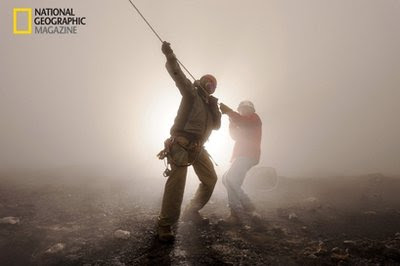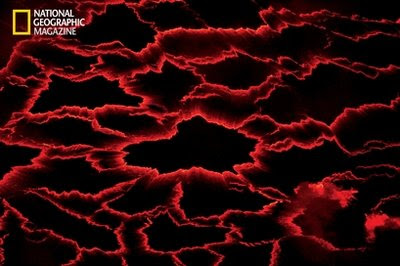World's Largest and least Lava Lakes
Member of expedition walks
A member of the expedition walks on the caldera's cooled lava floor, turned red by the reflected glow of the lake. 'Down here you feel the volcano,' says photographer Carsten Peter. 'It's a low-frequency rumbling that pulses through your body—like being inside a giant subwoofer.Lava at Nyiragongo is made
The lava at Nyiragongo is made of an alkali-rich volcanic rock; its unusual composition may be a factor in the lava's fluidity.Had to be hauled
All of the expedition's food, water, and gear had to be hauled to the summit rim, then lowered by pulley into the caldera. The biggest threat was falling rocks, says volcanologist Ken Sims, who led the team with fellow scientist Dario Tedesco. 'The caldera is continually collapsing on itself.With temperatures, lava lake is
With temperatures around 1800°F, the lava lake is wildly erratic. As molten rock meets the air, it cools and forms plates on the lake's surface








